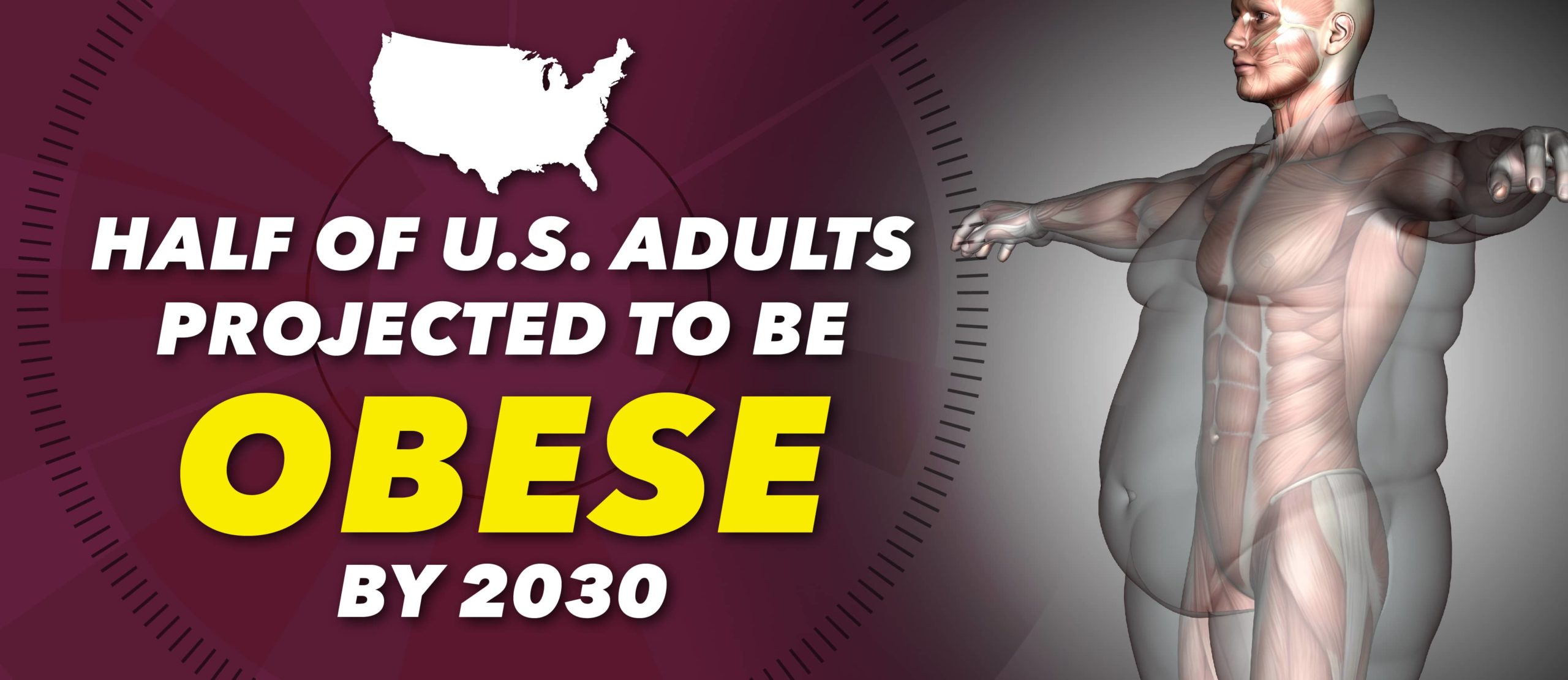The wide-ranging negative impact of obesity is perhaps most strongly felt in the field of cardiometabolic health, in which diabetes-related complications are on the rise, heart disease remains the leading cause of death, and over 795,000 people in the U.S. suffer from a stroke each year. Increasing the risk of serious cardiometabolic conditions, the obesity public health crisis impacts more than 100 million adults and children in the United States. In addition, experts believe that current estimates of national obesity prevalence may underestimate its true impact due to the fact that statistics are based on self-reported patient information.
Despite growing public health efforts and lifestyle interventions, researchers predict that nearly half of U.S. adults will be obese if current trends continue and severe obesity is projected to affect nearly 25% of the population, according to a recent MedPage Today report.
Estimating Trends and Projected Obesity Rates
Led by Zachary Ward, MPH, a team of researchers at the Harvard T.H. Chan School of Public Health investigated state-specific and demographic subgroup-specific trends and projected the prevalence of categories of body-mass index. After developing methods to correct for self-reporting bias and better estimate obesity rates, the authors analyzed BMI data reported by over 6,000,000 adults who participated in the Behavioral Risk Factor Surveillance System Survey. Data was corrected for quantile-specific self-reporting bias using additional data gathered from participants of the National Health and Nutrition Examination Survey. “We fitted multinomial regressions for each state and subgroup to estimate the prevalence of four BMI categories from 1990 through 2030: underweight or normal weight (BMI <25), overweight (25 to <30), moderate obesity (30 to <35), and severe obesity (≥35),” the study’s authors wrote. To evaluate the accuracy of their model, researchers used data from 1990 through 2010 to predict 2016 obesity prevalence with a successful outcome.
Rapidly Growing Obesity Rates
Published in The New England Journal of Medicine, the study’s findings reveal alarming population-wide trends. The results implicate with high predictive accuracy that by the year 2030, nearly 50% of the U.S. adult population will have obesity. The prevalence is expected to be higher than 50% in 29 states and not below 35% in any state.
Severe obesity – or a BMI of 35 and above – is likely to become the most common BMI category among women (27.6%), non-Hispanic African Americans (31.7%), and low-income adults (31.7%) by 2030.
“Although severe obesity was once a rare condition, our findings suggest that it will soon be the most common BMI category in the patient populations of many health care providers. Given that health professionals are often poorly prepared to treat obesity, this impending burden of severe obesity and associated medical complications has implications for medical practice and education,” the research team cautioned.
State-by-State Predictions
Evaluating the data further, the study’s authors conducted a state-by-state analysis to predict obesity prevalence for each state. Per their calculations, the highest prevalence is expected in Alabama, Mississippi, and Oklahoma, which are projected to reach 58%. On the other hand, California, Colorado, and Hawaii are projected to have the lowest obesity rates, at 41%, 38%, and 41%, respectively. The District of Columbia is projected to have the lowest prevalence of all – 35%.
The projections reveal worrying trends in obesity prevalence, despite wide-scale national lifestyle interventions and prevention efforts; implications of the study’s findings have potentially tremendous repercussions for nation-wide public health. Severe obesity is associated with disability, disease, and death compared with moderate obesity. “The high projected prevalence of severe obesity among low-income adults and the high medical costs of severe obesity have substantial implications for future health care costs, especially as states expand access to obesity-related services for adult Medicaid beneficiaries,” Ward and colleagues wrote.
Both the prevalence of obesity and severe obesity in U.S. adults will continue rising nationwide, with large disparities between states and demographic subgroups. Although, the estimates assume increases in obesity prevalence according to current rates – one of the main limitations of the research, which may result in larger uncertainties than estimated. However, with increased and improved interventions in at-risk populations, this trend can hopefully be reversed


















